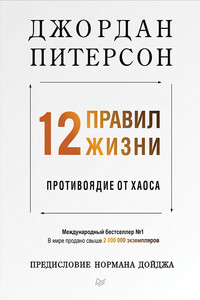Скрытая сила привычек. Как перестать ограничивать свои возможности, мечты и достижения - страница 85
Mangels, Jennifer A., Brady Butterfield, Justin Lamb, Catherine Good, and Carol S. Dweck. 2006. «Why do beliefs about intelligence influence learning success? A social cognitive neuroscience model.» Social Cognitive and Affective Neuroscience 75–86. https://www.ncbi.nlm.nih. gov/pmc/articles/PMC1838571/.
Andrews-Hanna, Jessica R., Jonathan Smallwood, and R. Nathan Spreng. 2014. «The default network and self-generated thought: component processes, dynamic control, and clinical relevance.» The Year in Cognitive Neuroscience 1316 (1): 29–52. https://nyaspubs. onlinelibrary.wiley.com/doi/abs/10.1111/nyas.12360.
Mrazek, Michael D., Michael S. Franklin, Dawa Tarchin Phillips, Benjamin Baird, and Jonathan W. Schooler. 2013. «Mindfulness Training Improves Working Memory Capacity and GRE Performance While Reducing Mind Wandering.» Psychological Science 24 (5): 776–781. http://pss.sagepub.com/content/24/5/776.
Brewer, Judson. 2011. «Meditation experience is associated with differences in default mode network activity and connectivity.» Proceedings of the National Academy of Sciences of the United States of America. http://www.ncbi.nlm.nih.gov/pubmed/22114193.
Holzel, Britta K. 2011. «Mindfulness practice leads to increases in regional brain gray matter density.» Psychiatry Research 36–43. https://www.ncbi.nlm.nih.gov/pmc/articles/PMC3004979/.
Menon, Vinod, and Lucina Q. Uddin. 2010. «Saliency, switching, attention and control: a network model of insula function.» Brain Structure & Function 655–667. https://www.ncbi.nlm.nih.gov/pmc/articles/PMC2899886/.
Crum, Alia J., and Ellen J. Langer. 2007. «Mind-set Matters: Exercise and the Placebo Effect.» Psychological Science 18 (2): 165–171. https://mbl. stanford.edu/sites/default/files/crum_rethinkingstress_jpsp_2013.pdf.
Hanson, Rick. n.d. «Confronting Negativity Bias.» Rick Hanson. http://www.rickhanson.net/how-your-brain-makes-you-easily-intimidated/.
Anderson, Nancy L. n.d. «5 Ways To Make Your New Years Resolutions Stick.» Forbes. https://www.forbes.com/sites/financialfinesse/2013/01/03/5-ways-to-makeyour-new-years-resolutions-stick/#7ae58d011ebd.
Comaford, Christine. 2015. «Achieve Your Goals Faster: The Latest Neuroscience Of Goal Attainment.» Forbes. November 22. https://www.forbes.com/sites/christinecomaford/2015/11/22/achieve-your-goals-faster-the-latest-neuroscience-of-goalattainment/#15755966e25d.
G. Oettingen and B. Schwörer, «Mind Wandering via Mental Contrasting as a Tool for Behavior Change,» Front Psychol 4 (Sep 2, 2013):0 562; D. T. Stuss, «Functions of the Frontal Lobes: Relation to Executive Functions,» J Int Neuropsychol Soc 17, no. 5 (Sep 2011): 759–65; and A. T. Sevincer, P. D. Busatta, and G. Oettingen, «Mental Contrasting and Transfer of Energization,» Pers Soc Psychol Bull 40, no. 2 (Feb 2014): 139–52.
Oettingen, Gabriele, and Doris Mayer. 2002. «The motivating function of thinking about the future: Expectations versus fantasies.» Journal of Personality and Social Psychology 83 (5): 1198–1212. https://www.ncbi.nlm.nih.gov/pubmed/12416922.
Milne, S., S. Orbell, and P. Sheeran. 2002. «Combining motivational and volitional interventions to promote exercise participation: protection motivation theory and implementation intentions.» British Journal of Health Psychology 7 (Pt.2): 163–184. https://www.ncbi.nlm.nih.gov/pubmed/14596707.
Robert P. Spunt, Emily B. Falk, and Matthew D. Lieberman, «Dissociable Neural Systems Support Retrieval of How and Why Action Knowledge.» Psychological Science 21 (2010): 1593, originally published online 19 October 2010, DOI: 10.1177/0956797610386618.
Lally, Phillippa, Cornelia Jaarsveld, Henry Potts, and Jane Wardle. 2010. «How are habits formed: Modelling habit formation in the real world.» European Journal of Social Psychology 40: 998-1009. https://centrespringmd.com/docs/How%20 Habits%20are%20Formed.pdf.
Robynne Boyd, «Do People Only Use 10 Percent Of Their Brains?» Scientific American, February 7, 2008, https://www.scientificamerican. com/article/do-people-only-use-10-percent-of-their-brains/.








